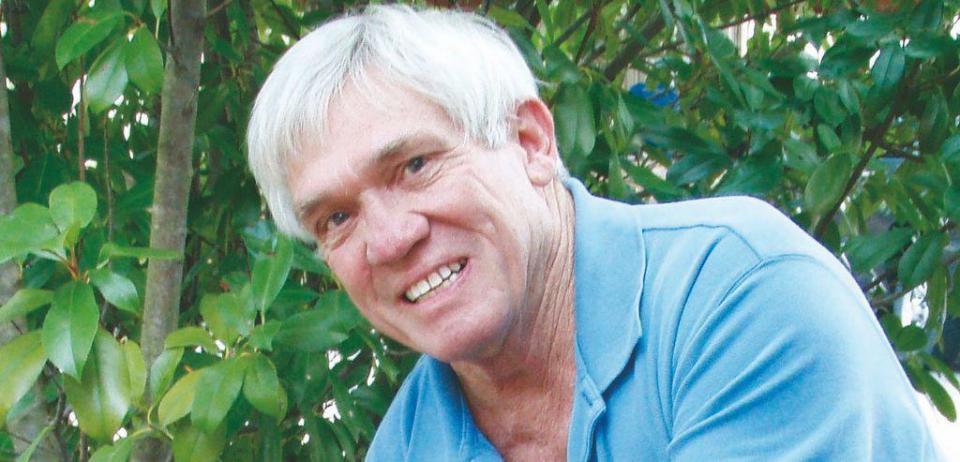ECOVIEWS: Thanksgiving is over but turkeys live on
![Well-camouflaged baby turkeys stay close to their mother. [Photo courtesy Andrew Lydeard]](https://s.yimg.com/ny/api/res/1.2/xjiP654p5N8oPreforsl.g--/YXBwaWQ9aGlnaGxhbmRlcjt3PTEyNDI7aD04Mjg-/https://media.zenfs.com/en/the-tuscaloosa-news/1f18499e7d2b1565beb7c078a5ffc0f9)
Turkeys almost went extinct during early settlement days. Now they make an annual appearance on millions of dining room tables across the country. Some people are still eating turkey sandwiches, turkey tetrazzini and turkey pot pie days later.
For most Americans, Thanksgiving would be a hollow holiday without a turkey on the table. What do we really know about this bird that epitomizes the national holiday?
Below, I offer some facts about turkeys and organizations that support them. Despite the ubiquity of wild turkeys, aspects of their history are shrouded in uncertainty, the subject of controversy and speculation.
Did Benjamin Franklin really propose the wild turkey instead of the bald eagle as the national bird? Some historians claim he made the proposal in a letter to his daughter. Personally, I did not know Ben Franklin even had a daughter, so I am not sure what to think about that letter.
Which president initiated the tradition of pardoning a turkey at Thanksgiving? Lincoln, Truman, Kennedy or Reagan? All of them as well as others have been suggested. The balloting would be close in deciding which tale is true.
The following turkey questions are ones with mostly verifiable answers.
Q. I have heard that a group somewhere focuses on protecting turkeys the way Ducks Unlimited promotes and protects waterfowl. Is there an organization for turkeys?
A. Yes. In fact, there are two. The members, of course, are people, not turkeys. Founded in 1973, the National Wild Turkey Federation in Edgefield, S.C., is a nonprofit conservation organization with more than 125,000 members. The federation is dedicated to “the conservation of the wild turkey and the preservation of our hunting heritage.” The National Turkey Federation, a nonprofit trade association, focuses on promoting consumption of domestic turkeys (the primary source of the big birds at Thanksgiving) and advocating for turkey farmers.
Q. How many wild turkeys are estimated to be in existence today?
A. More than 6 million wild turkeys range from Canada to Mexico. Restoration projects and programs to ensure suitable wildlife habitat have resulted in their return as a key component of our native fauna. Ironically, the present-day success of the species is in large part due to the positive role that regulated hunting has on a popular game species by ensuring the environmental health of habitats and by controlling illegal hunting. Loss of natural habitats is a major threat to native wildlife, both game and nongame. Turkey hunters are strong proponents of maintaining wild areas throughout North America.
Q. With the nationwide efforts to repopulate wild turkeys as a game bird, are they now in every state? Which one has the highest population numbers?
A. Alaska is the only state with no wild turkeys. Wild turkeys have returned to the landscape elsewhere, and their numbers today far exceed those of only a few decades ago. Texas is the winner with a half million. Alabama is ranked No. 2, with as many as 450,000. Kansas, Wisconsin, Georgia and Missouri have more than 300,000 each. If the bird’s population levels had kept the trajectory they were on following the arrival of the first European settlers, by the beginning of the 21st century, we might be remembering them the way we do passenger pigeons and Carolina parakeets – as an extinct species whose disappearance we could have prevented.
Q. How many turkeys are eaten at Thanksgiving in the United States?
A. Americans consume an estimated 40 million-plus domestic turkeys each year on Thanksgiving Day. The number of wild turkeys eaten is unknown, but without question many make it to a dinner platter.
From natural history to presidential pardons, questions about turkeys and Thanksgiving abound. One such question has to do with an iconic song, “Jingle Bells.” Historians agree that the song was written in the 1850s by James Pierpont. But was it, as some claim, originally sung at Thanksgiving not Christmas? Either way since Turkey Day is behind us and Santa is on his way, we are sure to start hearing it now.
Whit Gibbons is professor of zoology and senior biologist at the University of Georgia’s Savannah River Ecology Laboratory. If you have an environmental question or comment, e-mail ecoviews@gmail.com.

This article originally appeared on The Tuscaloosa News: Ecoviews: Thanksgiving is over but turkeys live on

